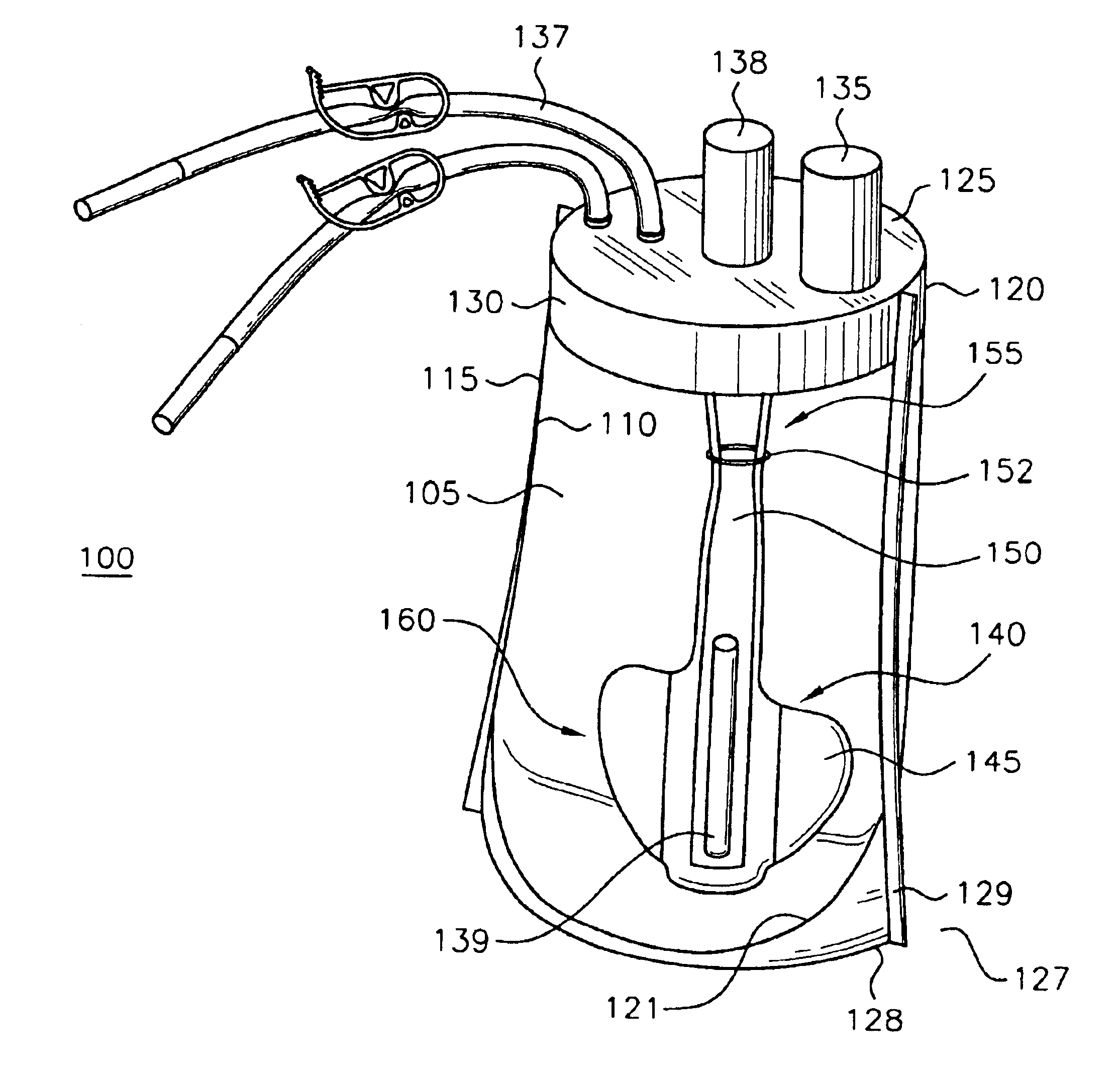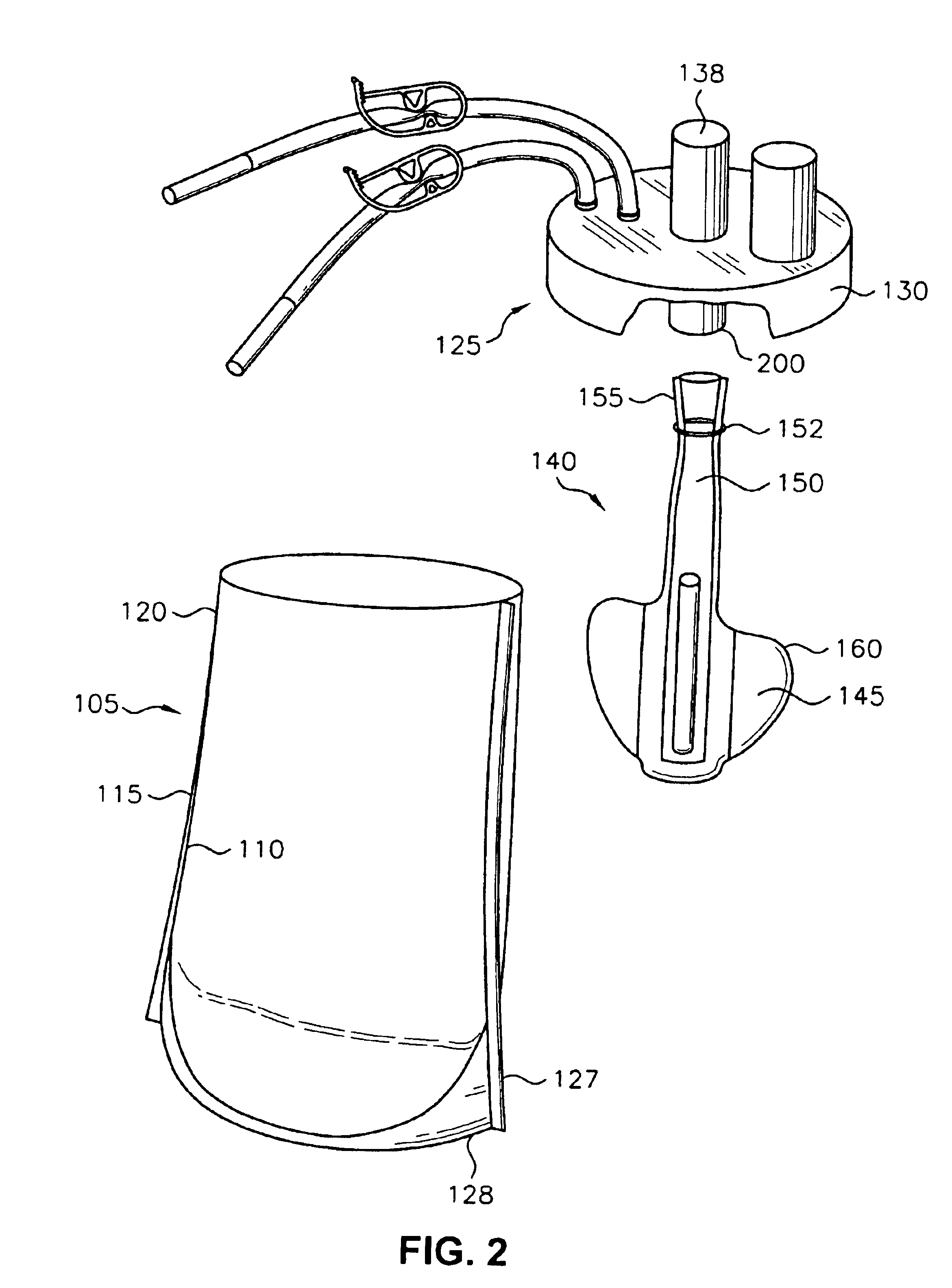Disposable vessel
a technology of a vessel and a lid is applied in the field of laboratory vessels, which can solve the problems of cell shearing, high cost of cell culture vessels, and high maintenance costs of glass and metal cell culture vessels, and achieve the effects of reducing the cost of cell culture, and improving the quality of li
- Summary
- Abstract
- Description
- Claims
- Application Information
AI Technical Summary
Problems solved by technology
Method used
Image
Examples
Embodiment Construction
The entire disclosure of U.S. patent application Ser. No. 09 / 901,767 filed Jul. 9, 2001 is expressly incorporated by reference herein. The present invention provides a vessel for cell culture comprising a collapsible bag with an inner surface, an outer surface, a top periphery and a headplate. The bag has a circumferential edge wherein the top periphery of the bag is sealed to the edge of the headplate. The present invention also provides an impeller comprising a hollow flexible shaft having a top region and a bottom region, wherein the bottom region comprises a flexible blade. The present invention further provides a method of mixing a fluid comprising the steps of providing a vessel having a collapsible bag containing an impeller comprised of a hollow flexible shaft, inserting a magnet into the hollow shaft of the impeller, introducing an external, adjustable magnetic source to interact with the magnet and cause the magnet and the hollow shaft to move. The method may also include ...
PUM
| Property | Measurement | Unit |
|---|---|---|
| flexible | aaaaa | aaaaa |
| force | aaaaa | aaaaa |
| magnetic force | aaaaa | aaaaa |
Abstract
Description
Claims
Application Information
 Login to View More
Login to View More - R&D
- Intellectual Property
- Life Sciences
- Materials
- Tech Scout
- Unparalleled Data Quality
- Higher Quality Content
- 60% Fewer Hallucinations
Browse by: Latest US Patents, China's latest patents, Technical Efficacy Thesaurus, Application Domain, Technology Topic, Popular Technical Reports.
© 2025 PatSnap. All rights reserved.Legal|Privacy policy|Modern Slavery Act Transparency Statement|Sitemap|About US| Contact US: help@patsnap.com



